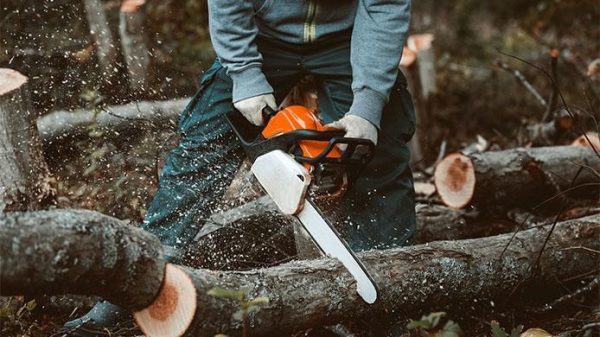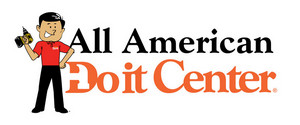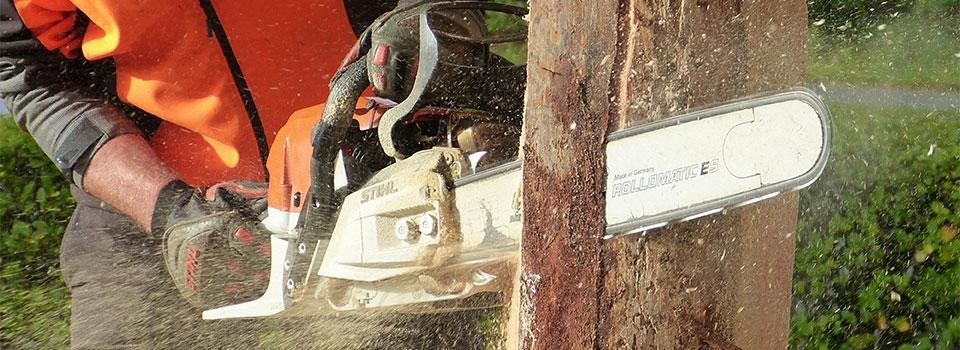
Chainsaw Safety
Chainsaws are used for a variety of reasons. They are used to cut back branches, cut down entire trees, or create a stockpile of firewood. A chainsaw is a dangerous power tool. Before you decide to go outside and fire it up this fall, make sure you do these two essential things.
First, tell someone where you’ll be working. If you get into an accident, someone will know where to find you.
Second, always carry a mobile phone. If you get hurt but can reach a phone, you can call for help. If you are injured and are not able to call, emergency personnel may be able to find the location on your device if you’ve been gone too long. While these are the first things you should put into consideration when you get out the chainsaw this year, here are other chainsaw safety steps to take to keep you safe.
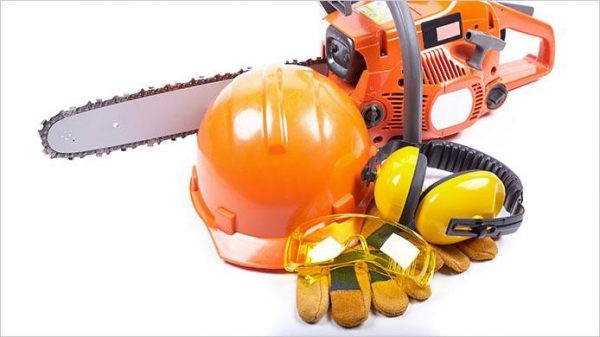
Safety Gear
When you’re heading out, make sure you have the right gear. To keep your head and face protected, wear a helmet with a visor, ear protection, and safety glasses. You should also wear protective pants and a forestry jacket with anti-slip boots. This will give you extra padding on your arms and legs, and prevent you from losing your balance. Don’t forget to wear gloves to protect your hands.
Proper Stance
Yes, there is a proper way to stand while using a chainsaw. This stance is commonly known as the “boxer stance.” If you don’t know what this is and are right-handed, put your left foot slightly in front of your right foot at a 45-degree angle. The right foot should be slightly back for balance, and feet should be shoulder-width apart. If you’re left-handed, place your left foot back instead of your right. Finally, make sure your knees are bent.
Hand-Eye Coordination
When the chain is moving, you need to be watching. It only takes a split second of distraction that results in the blade ripping through a major artery.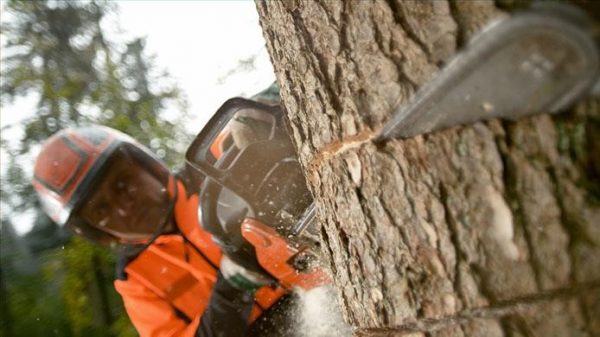
Plan out Your Cut
Make sure to plan your cut first. When planning a cut, you need to know where the saw’s bar (a chainsaw’s blade is also called a bar) is, and where it will exit the log or branch. You don’t want to accidentally sweep through the log right into your leg or foot, or some other item that you didn’t want to get cut.
Don’t Be Caught off Guard
Which side of the bar you use will make a difference in which way the saw pulls you. Don’t be alarmed when it does start to pull you. If you cut with the bottom of the bar, it will pull you toward the log. If you cut with the top of the bar, you will be pushed away from the log. Just knowing this simple fact will make you aware of what your saw will likely do when you start cutting. Watch out for branches that change their angle as they get cut. This may ‘pinch” or “bind” your chain saw tight to the wood.
Be Prepared for the Kickback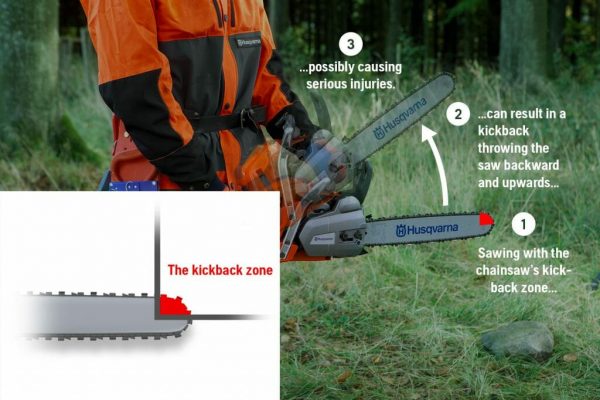
The primary reason people get in chainsaw accidents is because of the kickback. Kickback is when the tip of the bar reverses back quickly when cut wood pinches the saw chain. Equip your saw with a “reduce-kickback” style chain to avoid testing your reflexes. (Illustration, source: Husqvarna).
Safely Distance Yourself and Surroundings
When you plan on working with a chainsaw, no one should be within 10 feet of you. This is especially important when cutting down trees, but also true for trimming back branches.
Now that you’ve read this article with these safety tips, you can help protect yourself and others, prevent accidents, and stay safe while you’re handling a chainsaw! Use the checklist below (source: OSHA.gov) and be sure to practice proper chainsaw safety techniques every single time the saw is in your hands.
OSHA’S CHAINSAW SAFETY CHECKLIST
Before Starting a Chain Saw
- Check controls, chain tension, and all bolts and handles to ensure that they are functioning properly and that they are adjusted according to the manufacturer’s instructions.
- Make sure that the chain is always sharp and the lubrication reservoir is full.
- Start the saw on the ground or on another firm support. Drop starting is never allowed.
- Start the saw at least 10 feet from the fueling area, with the chain’s brake engaged.
Fueling a Chain Saw
- Use approved containers for transporting fuel to the saw.
- Dispense fuel at least 10 feet away from any sources of ignition when performing construction activities. No smoking during fueling.
- Use a funnel or a flexible hose when pouring fuel into the saw.
- Never attempt to fuel a running or HOT saw.
Chain Saw Safety
- Clear away dirt, debris, small tree limbs and rocks from the saw’s chain path. Look for nails, spikes or other metal in the tree before cutting.
- Shut off the saw or engage its chain brake when carrying the saw on rough or uneven terrain.
- Keep your hands on the saw’s handles, and maintain secure footing while operating the saw.
- Proper personal protective equipment must be worn when operating the saw, which includes hand, foot, leg, eye, face, hearing and head protection.
- Do not wear loose-fitting clothing.
- Be careful that the trunk or tree limbs will not bind against the saw.
- Watch for branches under tension, they may spring out when cut.
- Gasoline-powered chain saws must be equipped with a protective device that minimizes chain saw kickback.
- Be cautious of saw kick-back. To avoid kick-back, do not saw with the tip. If equipped, keep tip guard in place.
